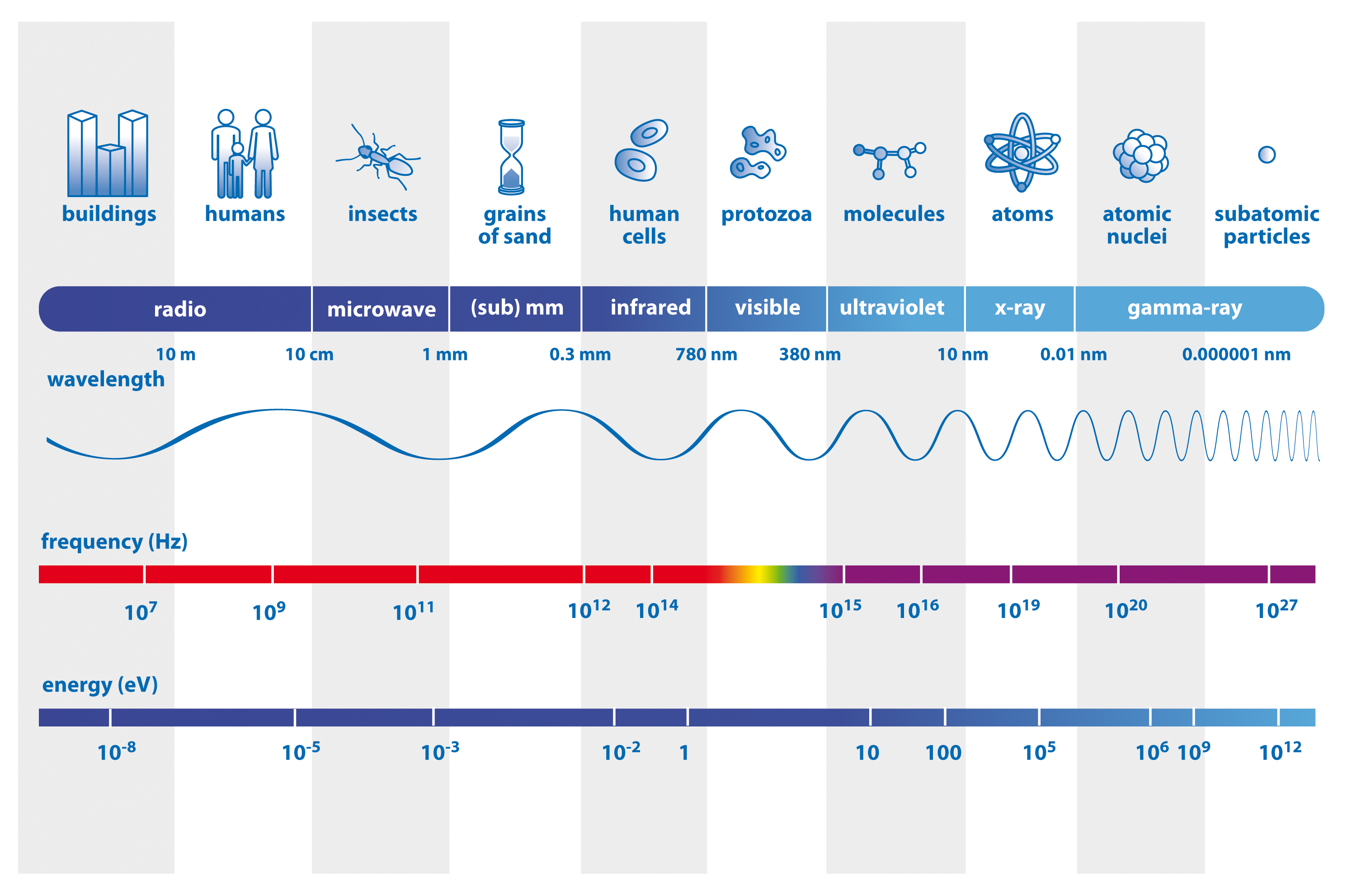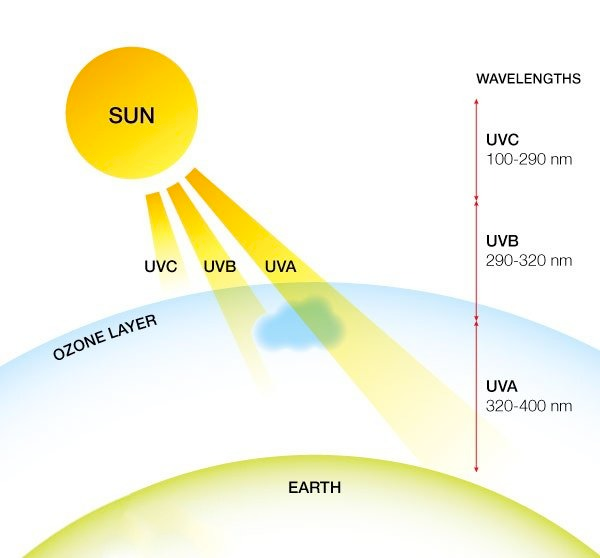Everything about all four filter stages
AiroDoctor is both: a room air purifier with quadruple filter. Thus, it combines the advantages of both technologies. In the first three filtering steps (pre-filter, activated carbon and HEPA filter) viruses, bacteria, pollutants, gases, odors, fine dust and allergens are filtered. In the last step, photocatalysis, they are neutralized, i.e. destroyed, up to 99.9% without leaving any residue. Here, even the smallest infectious particles are rendered harmless if they could only be filtered to a limited extent or not at all due to their particle size of less than 1.4 micrometers.
Often the terms air cleaner, air filter and air purifier are used interchangeably. Strictly speaking, however, they are different.
• An air filter or air cleaner is a filtering device that uses certain filters, such as a HEPA or activated carbon filter, to filter pollutants, allergens, gases or aerosols from the air and collect them inside.
• An air purifier eliminates pollutants and pathogens by UV-C light, ionization or the risk-free photocatalysis with UV-A light. Depending on the device, by-products such as ozone and formaldehyde are eliminated, or no emissions at all, as is the case with the AiroDoctor.
The AiroDoctor is a particularly powerful and durable air purifier. Its high-performance LEDs have a lifespan of at least 50,000 operating hours, and the filter made of 250g solid titanium dioxide (TiO2) hardly wears out at all. This means that the AiroDoctor has a significantly longer lifespan than air purifiers that operate with conventional UV-A and UV-C lamps (max. 10,000 hours).
When it comes to HEPA filters, look for the designation filter class H13 or H14, which filter 99% of all pollutants and pathogens from the air. It's important to refrain from other names, like "TrueHEPA" or "HyperHEPA", as those aren't certified HEPA filters and therefore aren't allowed to be called a HEPA filter. Furthermore, make sure that the HEPA filter does not only collect the filtered particles, but that they are sustainably destroyed afterwards. This is important because the filtered particles can remain active in the HEPA filter for quite some time, as studies have shown. This becomes a hazard when the filter is changed or used improperly for too long.
In addition, decomposition products of certain bacteria, known as endotoxins, escape from the filters into the room air and thus also become a health risk. That's why the AiroDoctor uses a powerful combination of different filters: first, pollutants and pathogens are filtered out of the air using a prefilter, activated carbon and HEPA filter. In the next step, photocatalysis, these filtered particles are destroyed and safely neutralized. Thus, the AiroDoctor is a powerful, safe and sustainable air purifier.
Neither. HEPA (High Efficiency Particulate Airfilter) is a proven filter technology that filters up to 99% of all pollutants and pathogens from the air in filter classes H13 and H14. Problematic is the fact that the filtered particles remain active in the HEPA filter for quite some time, as studies have shown. This becomes a hazard when the filter is changed or used improperly. In addition, decomposition products of certain bacteria, so-called endotoxins, leak out of the filters into the room air and thus also become a health risk. That's why the AiroDoctor uses a powerful combination of different filters: first, pollutants and pathogens are filtered out of the air using a prefilter, activated carbon and HEPA filter. In the next step, photocatalysis takes place, where filtered particles are destroyed and neutralized. Thus, the AiroDoctor with this special filter combination is a particularly powerful, safe and sustainable air purifier.
Yes, it is even more effective. The size of the device plays a secondary role in air purification. More important is the technology used in combination with a high Clean Air Delivery Rate (CADR). Despite its compact size and a weight of just under 12kg, the AiroDoctor fourfold filter cleans indoor air particularly effectively and sustainably. Its unique photocatalysis technology destroys all organic substances and thus renders viruses and bacteria harmless. The AiroDoctor is particularly effective thanks to its unique combination of powerful UV-A LED modules and a filter core made of 250g solid titanium dioxide (TiO2). This allows it to clean the air significantly more effectively than conventional HEPA filters, regardless of size or how many HEPA filters are installed.
UV-A light is much more efficient than UV-C light and is therefore much more suitable for the filter technology photocatalysis, in which 99,9% of all organic substances such as viruses and bacteria are sustainably destroyed. Moreover, unlike UV-C light, air purification with UV-A light is not harmful to humans and handling it is not dangerous. Also, unlike UV-C light, air purification with UV-A does not release ozone. The AiroDoctor has powerful LED modules that can produce a UV-A wavelength of 385nm (nanometers), which is optimal for photocatalysis.
In order to get the CE certification, there are safety tests to pass. We tested AiroDoctor following IEC60335-2-65 and IEC 60335-1 /2 (air cleaning system and purifier) which are standards required to get both CE (required for Europe) and UL (required for the USA)
Early last year, the EU standard (CE) announced even more strict tests and regulations for UVC devices. Even a minimum quantity of UV-C / UV-B / UV-A leaving the unit is not acceptable.
UV (Ultraviolet) Light refers to the region of the electromagnetic spectrum between visible light and X-rays, with a wavelength falling between 400 and 10 nanometers. This electromagnetic radiation is not visible to the human eye, because it has a shorter wavelength and higher frequency than the light our brain perceives as images. An easy way to remember UV light's placement on the electromagnetic spectrum is to examine the ends of the visible light spectrum: Red is the light with the longest wavelength, and Violet is the light with the shortest wavelength. Therefore, light with a wavelength longer than any light in the visible spectrum is called Infrared Light, and light with a wavelength immediately shorter than any light in the visible spectrum is called Ultraviolet Light.
Scientists categorize UV light into several different subtypes:
• UV-A light (320-400nm) is UV light with the longest wavelength, and the least harmful. It is more commonly known as "black light", and many use its ability to cause objects to emit fluorescence (a colored glowing effect) in artistic and celebratory designs. Many insects and birds can perceive this type of UV radiation visually, along with some humans in rare cases such as Aphakia (missing optic lens).
• UV-B light (290-320nm) causes sunburns with prolonged exposure along with increasing the risk of skin cancer and other cellular damage. About 95% of all UV-B light is absorbed by the ozone in Earth's atmosphere.
• UV-C light (100-290nm) is extremely harmful and is almost completely absorbed by Earth's atmosphere. It is commonly used as a disinfectant in food, air, and water to kill microorganisms by destroying their cells' nucleic acids.

Viruses, bacteria, fine dust and allergens: More pollutants and pathogens collect in indoor air than is generally known. This means an increased risk for acute infections caused by viruses and bacteria, but also for chronic lung diseases caused by fine dust, fungal spores and pollen. It is not always possible to remedy the situation by supplying fresh air, either due to structural or climatic conditions. Often the outside air is just as polluted as the indoor air itself, for example in the case of a high fine dust or pollen load. The AiroDoctor helps to sustainably filter harmful, infectious and allergenic particles from the indoor air. No additional harmful by-products such as ozone are produced in the process.
Yes. The AiroDoctor filters 99.9% of all substances from the room air, including individual viruses, for example. With the help of photocatalysis, all filtered organic substances, regardless of their size, are destroyed safely and permanently in the final stage of the process. This also includes all mutations of the coronavirus.
Infectious aerosols are very fine droplet nuclei filled with hundreds to thousands of viruses. These aerosols do not fall immediately to the ground after sneezing or coughing, as infectious droplets do, but in some cases remain in the air and circulate for hours. Aerosols are produced primarily during loud speaking, singing or sports. Keeping a distance and simple everyday or surgical masks do not provide sufficient protection against infectious aerosols. Only tight-fitting FFP2 masks, sufficient ventilation and powerful air purifiers such as the AiroDoctor can minimize the risk of infection.
The AiroDoctor is a four stage filter. The prefilter catches coarser particles, activated carbon and HEPA filters particles up to 0.1μm (micrometers) in diameter. With the help of photocatalysis, the last and most effective filter stage, triggered by high-power LED modules in combination with an array of titanium dioxide (TiO2), 99.9% of particles are destroyed and safely rendered harmless.
Endotoxins are decomposition products of certain bacteria. They are formed during the filtration process when bacteria decompose in the HEPA filter. Endotoxins cannot be retained by conventional filters and are released into indoor air, where they pose a serious health risk. The photocatalysis of the AiroDoctor also destroys and neutralizes these decomposition products so that they can no longer enter the air we breathe.
 Français
Français
 English
English
 Deutsch
Deutsch
 Italiano
Italiano
 Español
Español
 한국어
한국어
 繁體中文
繁體中文
 Việt Nam
Việt Nam
